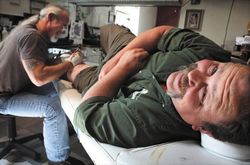With Help, Conductor and Wife Ended Lives
John F. Burns, New York Times (July 14, 2009)
For several years now, the UK press has reported on individuals and couples who travel to the Dignitas Clinic in Switzerland to end their lives. The most recent articles focus on Sir Edward Downes and his wife Joan. Joan Downes had terminal cancer and based upon statements by family members, Edward Downes (who did not suffer from any terminal disease) accompanied his wife in order to die with her. The Downes’ case, while tragic, is but one of many over the last year. Indeed, a similar situation occurred for another couple, Peter and Penelope Duff, in March 2009. The Duff’s were a well-to-do couple who lived in Bath, England (where I am faculty member in the Centre for Death and Society at the University of Bath). They were both suffering from terminal diseases and chose to end their lives at Dignitas.
What emerges from all of these cases is an often overlooked point and an issue that I think deserves more attention. The services offered at Dignitas are not free and each assisted death costs roughly $6,750 US dollars (approx. 4,100 British Pounds or 4,800 Euros). I mention the cost, which will most certainly strike many readers as crass, precisely because choosing to die in a less-than-violent manner is increasingly becoming an option only for the affluent. The debate in the UK over assisted suicide absolutely taps into the ongoing debates about social class and it is apparent that individuals with access to the necessary funds will make their way to Dignitas.
The Guardian maintains an extremely valuable news archive on Assisted Suicide and I would suggest that all Death Reference Desk readers spend some time looking through the articles.
Interestingly enough, as debates about changing the UK’s laws on assisted suicide go on and on, two American states are often used as models. Both Oregon and Washington State have Death with Dignity Act laws and the Oregon law is often cited (and used) as a leading example of a rigorously reviewed, fair law. The Oregon Death with Dignity Act has even withstood judicial review by the United States Supreme Court (Gonzales v. Oregon 2006)
The UK’s assisted dying debate will most certainly continue as will the numbers of people choosing to die at Dignitas. This is a topic that I will also bring to the Death Reference Desk on a regular basis.
 This is a wonderful article on Memorial Tattooing, or a tattoo that an individual chooses after a person or pet dies. The article also explains an old tattooing practice, namely the putting of cremated remains in the ink used for the tattoo. After my parents die I plan on having their cremated remains mixed into ink for new memorial tattoos.
This is a wonderful article on Memorial Tattooing, or a tattoo that an individual chooses after a person or pet dies. The article also explains an old tattooing practice, namely the putting of cremated remains in the ink used for the tattoo. After my parents die I plan on having their cremated remains mixed into ink for new memorial tattoos.